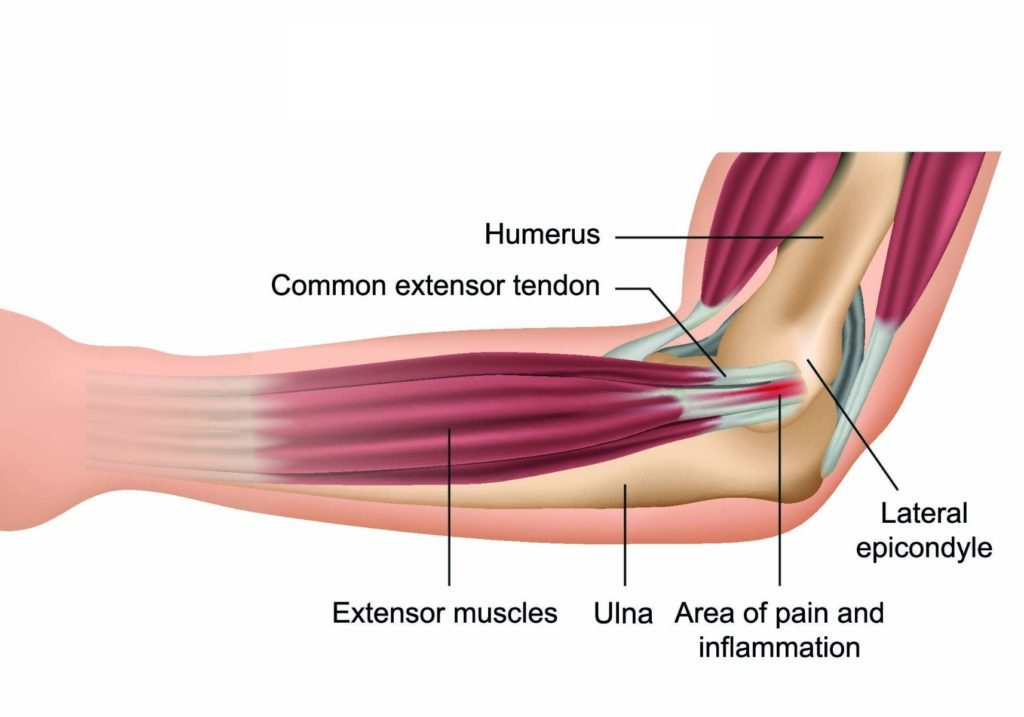The 7 Best Tennis Elbow Exercises For Pain Relief
Ever felt a nagging, persistent pain in the outer elbow? In some cases, this can be a sign of lateral epicondylitis, more commonly known as tennis elbow. Tennis elbow is frequently seen in athletes that play racquet sports – like tennis – due to the repetitive movements in the wrist.
Keep reading to learn more about tennis elbow, and how to fix tennis elbow with the seven best exercises for pain.
What Is Tennis Elbow?
Tennis elbow is a painful injury that develops from overuse. Although it is common in tennis players, it can be caused by any activity that involves repetitive gripping or twisting movements at the elbow and wrist, including occupations like painting and carpentry. Tennis elbow can impact on quality of life as it limits participation in work, sport, and recreational activities.
How Long Does Tennis Elbow Last?
For most people, symptoms of tennis elbow will usually resolve within 6-12 months. Physiotherapy can accelerate the recovery of tennis elbow and reduce the risk of recurrence. However, if left untreated tennis elbow can become ‘chronic’ and persistent for longer periods.
What Causes Tennis Elbow?
Tennis elbow affects the extensor muscles in the forearm, which extend the wrist and fingers. The extensor muscles originate at the lateral epicondyle, the bony part of the outer elbow, and travel down the back of the forearm to the wrist and hands.
Tennis elbow is an inflammatory response to repetitive overload, where the small tendons of the extensor muscles are repeatedly strained. Without adequate rest, it can cause pain and tenderness in the elbow.
Where Does Tennis Elbow Usually Hurt?
Tennis elbow usually presents as pain over the lateral epicondyle in the elbow, but the pain can also radiate up or down the arm.
Signs And Symptoms
What Does Tennis Elbow Feel Like?
There are a few common signs and symptoms of tennis elbow:
Elbow tenderness or pain
Pain that gets worse with gripping or twisting movements
Stiffness at the elbow
Weak grip strength
Difficulty during certain activities, like writing or holding objects
How Is Tennis Elbow Diagnosed?
Diagnosis of tennis elbow requires a thorough assessment and physical examination. In some cases, a doctor may request an ultrasound to ensure the correct diagnosis before a treatment plan is implemented.
Treatment Options
The best treatment for tennis elbow depends on the cause, severity, and location of symptoms. However, some common treatments may include:
Pain relief
Anti-inflammatories, such as Ibuprofen or Nurofen, are common pain relief medications prescribed by medical practitioners to relieve the symptoms of tennis elbow.
Ice therapy
Ice therapy can provide temporary relief for tennis elbow, helping to improve participation in other treatments such as physiotherapy.
Rest
While rest can temporarily relieve pain, once loading recommences the pain may return. Therefore, ‘relative rest’ is the more common approach, where the load is reduced but not completely removed, and gentle movements are gradually re-introduced.
Corticosteroid injections
In the appropriate circumstances, a doctor may recommend a corticosteroid injection, delivered close to the site of pain to relieve any symptoms. This can help break the pain cycle in the short-term and improve tolerance to other treatments, such as exercise.
Physiotherapy
Exercise is a vital part of tendon recovery. A physiotherapist may prescribe tennis elbow physical therapy exercises to help recondition the muscles and improve the load capacity of the affected tendon.
How To Treat Tennis Elbow At Home - The 7 Best Tennis Elbow Exercises For Pain Relief
Exercise can help relieve the symptoms of tennis elbow and restore function.
Initial Exercises
To start, a physiotherapist may recommend exercises to alleviate elbow pain:
1. Wrist Extension Stretch
To perform the exercise:
Start with your arm in a supported position
With the palm facing downwards, slowly bend your wrist until you feel a stretch at the back of your forearm
Hold for 15 seconds
Repeat the exercise up to 3 times, with adequate rest in between each set. A physiotherapist may progress the exercise by adding pressure from the other hand.
2. Wrist Range Of Motion
To perform the exercise:
Start in a comfortable position
Gently rotate your wrist in one direction
Then, in the other direction
Avoid any sudden movements
Repeat up to 10 times in each direction, resting as needed. A physiotherapist may progress the exercise by increasing the range or direction of movement.
3. Isometric (Static) Wrist Extension
To perform the exercise:
Start with your forearm supported on a table
Keeping your hand in line with your wrist, position your hand over the edge of the table with your palm facing downwards
Once in position, place a light weight into the hand
Hold the wrist in a static position for 15 seconds
Repeat up to 5 times, resting in between each set. A physiotherapist may progress the exercise by increasing the weight or length of exercise time.
Progressive Exercise
Once the elbow symptoms have settled, a physiotherapist may recommend exercises to rebuild strength:
4. Grip Squeezes
To perform the exercise:
Use a tennis ball, hand grip, exercise putty (as directed by your physiotherapist)
Place the ball in your hand
Gently squeeze the ball
Hold for 15 seconds, then release
Repeat up to 5 times. A physiotherapist may progress the exercise by increasing the strength of the exercise.
5. Isotonic (Dynamic) Wrist Extension
To perform the exercise:
This is progression to isometric wrist extension
Start in the same position
Once in position, slowly extend the wrist upwards
Then, lower the wrist slowly downwards
Do not go to end of range in either direction
Repeat up to 5-10 times. A physiotherapist may progress the exercise by changing the weight or range. If the symptoms are too irritable, the exercise can be completed without a weight.
6. Resisted Wrist Supination (Wrist Turns)
To perform the exercise:
Start with your forearm supported on a table
Keep your forearm in neutral, with your wrist in line with your hand
Place a light weight into your hand
Gently rotate your palm towards the roof
Then, gently rotate your palm towards the floor
Do not go to end of range in either direction
Repeat up to 5-10 times. A physiotherapist may progress this exercise by increasing the weight or number of repetitions. If the symptoms are too irritable, the exercise can be completed without a weight to begin with.
7. Towel Twists
To perform the exercise:
Hold a loosely rolled towel in your hands (lengthways)
Keeping your arms and shoulders relaxed, gently twist the towel in one direction, as if wringing water
Then, twist in the reverse direction
Repeat up to 5-10 times. A physiotherapist may progress this exercise by prescribing a Theraband bar.
Exercise technique and intensity should be closely monitored by the physiotherapist. Adjustments to intensity or duration can be made depending on symptom irritability and pain levels. With the right exercises, tennis elbow can be successfully treated.
Next Steps
Book Now
Tennis elbow is an overuse injury. Whilst most cases of tennis elbow resolve with time, physical therapy exercises for tennis elbow can help accelerate recovery and improve long-term outcomes. Don’t know what to do for outer elbow pain? Get in touch with our expert physiotherapist for advice!
Always seek professional medical guidance before starting any new exercises or treatment programs.




















